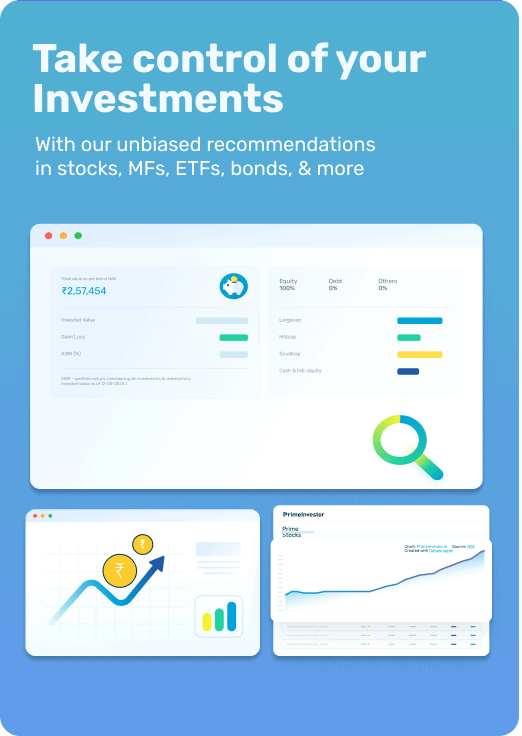- The repo rate cut will reduce rates for new borrowers taking external benchmark linked loans
- Older borrowers may need to wait for MCLR cuts by banks
- Your fixed rate vehicle, personal or credit card loans will not get cheaper
- The moratorium will entail your paying higher interest to your lender
- This is a dicey time to take either credit or duration risk
Gain access to the best mutual funds, ETFs, deposits and portfolios to invest in and get regular updates on them. Plus, top strategies for different markets. All this and more with a PrimeInvestor membership. Sign up today for a free trial!
Repo and reverse repo rate cut, asymmetric LAF corridor, Long Term Repo Operations, moratorium. With words like these used freely in the RBI package announced on Friday, ordinary borrowers and investors may be wondering if they have anything to cheer about. If you’ve been puzzled too, here are the measures explained in plain English.
RBI package – your questions answered
Q: The MPC has cut the repo rate by 75 basis points and the reverse repo rate by 90 basis points. What does this mean?

The repo rate is the interest rate that banks pay when they borrow quick money from the RBI and the reverse repo rate is the interest they receive when they park their short-term surpluses with RBI. So, after these cuts, banks will get to borrow short-term money from the RBI at 4.4% and lend to RBI at 4%. By cutting the reverse repo rate more sharply than the repo, RBI is nudging banks to give out more loans rather than play it safe by parking their money with it.
Q: What happens if I want to take a loan?
If you are looking for a new loan, you can expect to borrow at cheaper interest rates. How much cheaper will depend on the kind of loan you seek.
Today most banks offer home loans and home top-up loans that are linked to an external benchmark – usually the repo rate. When the repo rate falls, the interest rates on these loans automatically fall. Home loans and top-up loans linked to external benchmarks are likely to see their rates fall by 75 basis points immediately after RBI’s package.
SBI for instance, has announced that its External Benchmark Linked Lending Rate (EBR) will now be 7.05% instead of 7.8%. This is the minimum lending rate for the bank. Loans to individual borrowers will be subject to mark-ups based on their employment status (salaried versus non salaried), risk profile (CIBIL score) and loan size.
If you are salaried, have a good credit history and apply for a home loan of Rs 30 lakh-Rs 75 lakh from SBI today, you will get the loan at 7.45% pa (0.40% mark-up over EBR). If you are self-employed, it will cost 7.55%. If you take a loan against property from SBI, the mark-up can be 185-270 basis points above EBR. Different banks have different minimum lending rates as well as mark-ups.
While floating rate loans like home loans automatically adjust to repo rate cuts, fixed rate loans – which many vehicle loans, personal loans and credit card loans are – do not adjust. In their case, you will need to watch for banks to announce lower rates.
Q: Do I get these lower rates if I am repaying existing loans?
That will depend on whether your loan is explicitly linked to an external benchmark. If it is not, you will need to wait for your bank to announce cuts in its MCLR (Marginal Cost of Funds based Lending Rate). RBI had brought in external benchmark linked loans for Indian banks only from October 1 2019. So, home loans and top-up loans taken before this date are likely to be MCLR-based loans. Most banks are yet to announce changes to their MCLR. Again, such changes will only affect loans that are on floating rates. Fixed rate vehicle, personal loans or credit card loans that you’ve taken will not be affected.
Q: I hear that this moratorium that RBI has announced means that I can skip my EMIs for 3 months. That’s great, isn’t it?
Only if you have lost your job or have seen your income shrink and cannot afford to pay your EMIs. RBI’s moratorium announcement says that banks and NBFCs are ‘permitted to grant’ a moratorium of three months for loan instalments that are due between March 1 2020 and May 31 2020. Your loan will continue to accumulate interest during this period. This effectively means that the bank or NBFC from which you’ve borrowed will allow you to skip the three EMIs or interest payments (if you are only paying interest) from March 1 to May 31 2020, without treating this as a default or reporting it to CIBIL. Your credit score will thus remain unaffected even if you skip repayments in this period.
But once the three-month period is over, you end up paying your bank/NBFC a higher sum because you will owe extra interest at the contracted rate for the three months during which you skipped servicing your loan. If you have an EMI-based loan, your total loan tenure will be extended by 3 months. If you have a term loan where you’re only paying interest, the extra interest will be recovered at the end of the three-month moratorium. There’s no point in paying extra to your lending bank/NBFC if you can afford to service your loan. Therefore, if you can manage the payment, you must opt out of the moratorium.
This is particularly true of folks who have high-cost loans such as personal loans or credit card loans that they’re servicing. If they take advantage of the moratorium, the extra interest they’ll end up paying for the three-month relief will be sizeable! (Refer this notification https://www.rbi.org.in/Scripts/NotificationUser.aspx?Id=11835&Mode=0)
Q: But do I have a choice? I thought the bank will automatically stop debiting the EMI/interest?
No, RBI has asked individual banks to come up with policies on how they will implement this moratorium. Some banks have clarified that they will stop auto-debits only if the customer specifically requests them.
Q: I don’t have loans and have lots of savings. So, what does this rate cut mean for me?
The rock-bottom interest rates that you’re earning on your deposits will likely fall further. As RBI pressures banks to cut lending rates, the first thing they’ll try and do is to reduce their own costs so that their margins can be protected. The primary cost for a bank is the interest it pays on its deposits. So those rates are likely to see some drastic trimming. Just after the repo cut, SBI announced new interest rates on its term deposits, which range from 5% for less than 1 year to 5.7% for all tenures from 1 to 5 years. Senior citizens will get 5.5% and 6.2% respectively. Other leading banks will follow suit.
Q: That’s peanuts. Why don’t I switch my fixed deposits to NBFC or corporate FDs or even small finance banks that offer high rates?
Not a good idea. The lock-down induced by the COVID-19 crisis has led to most manufacturing companies temporarily shuttering operations, stressing their cash flows and ability to service debt. This makes corporate FDs a risky proposition. NBFCs and small finance bank in India will be in no better shape. The COVID-19 crisis is expected to lead to job losses, pay cuts and financial distress for both salaried and self-employed folk. This means that lenders who extend small-ticket loans, unsecured loans or loans against depreciating assets like cars and consumer durables are likely to see a spike in delays or defaults on loan repayments in the coming months.
The RBI moratorium will mean that the true state of NPAs at these lenders will not be apparent over the next three months and will only crop up later. This makes it a risky time to take big bets on the stocks, bonds or deposits of consumer finance NBFCs, small finance banks, co-operative banks and smaller private banks. It would be best to prioritise capital safety over returns and stick to the top 3-4 scheduled commercial banks for deposits, even if the rates are low. Your emergency fund in particular needs to be with such banks.
Q: Are there any other options that can give me better returns with safety?
Well, government small savings schemes remain a good option; you can find which government scheme to select by referring to those listed in Prime Deposits. The interest rates however are due for revision from April 1 2020 and you will need to watch for the government notification on the new rates on March 31. If you don’t need the money for the next few years, there is another high-returning government scheme that we have recommended in this article which you can go for.
Q: Does the package have anything for debt mutual funds?
Yes, it is likely to lift commercial paper, certificate of deposit and corporate bond prices (and sharply reduce yields) by infusing more liquidity into the buyers’ side of the corporate debt market. As part of its package, the RBI has announced Targeted Long-Term Repo Operations of Rs 1 lakh crore, under which banks will be allowed to borrow money from RBI exclusively to invest in high-quality corporate bonds and commercial paper. This should help bond prices rally (and yields fall) in CPs and corporate bonds which have seen a sharp selloff in recent times due to foreign investor exits. In fact, the move already seems to have had an impact, with yields on top rated corporate bonds declining 75-100 basis points and those on commercial paper falling by 100-200 basis points just after this announcement. Given that the package doesn’t extend to lower rated debt, yields for bonds rated AA or lower may remain high.
Q: So where can debt mutual fund investors go for relatively better returns?
Well, that’s a whole article on its own! Look out for our call tomorrow on what strategy to follow in debt mutual funds and which funds you can invest in.
Looking for more such, well-researched, actionable insights? Sign-up for a FREE trial of PrimeInvestor today!
